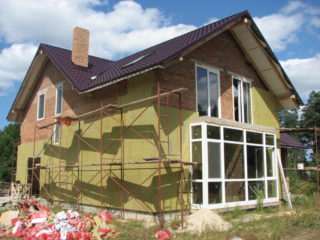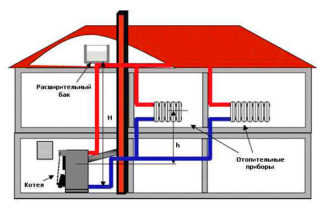Many craftsmen know perfectly well how to save money on the construction of a country house, moreover, so that this savings is about half of the estimated funds. Well, in principle, it is not difficult for a professional, because he is not a professional for nothing, he knows the prices for all the necessary materials very well, and has the ability to significantly knock them down. This does not mean cheap materials, that is, low quality, but rather decent materials, from which you can build a strong and durable home. For example, you can buy them for future use, in the fall or at the beginning of winter, when discounts are available on the main assortment, often very significant. The wholesale order also affects the price, so it makes sense for the developer to team up with several more like him and buy together. The more wholesale, the more discounts on goods and transportation.
At the design stage
In addition, the characteristics of the site on which the building is planned to be erected greatly affect the amount of savings. Ideally, this should be a flat, not hilly area with a low level of groundwater and a shallow depth of soil freezing in winter. Also, when choosing a site, it is advisable to take into account the availability of infrastructure, which assumes good access roads to the construction site. If you really want to save on transportation of building materials, then choose a region that has factories that produce at least half of what you will build your house from.
There are many more nuances on which you can save very well when building your suburban home, but this is all a one-time saving, so to speak. But there is also the so-called operational savings, when there is an opportunity to save on a properly built house from year to year, until the end of its operation in many decades or even, literally, centuries.
At the heating stage
Today everything has changed dramatically, fuel has risen in price, and therefore there is a need for capital insulation of housing.A good insulation is also not cheap, besides, even high-quality materials periodically lose their properties and need to be replaced, which implies additional costs, and constant ones. At the same time, even the so-called "warm" basic building materials, for example, wood, foam blocks, cinder concrete, do not save - although they save heat in the house better than brick or reinforced concrete, they still cannot do without insulation. And having insulated the house with the help of special materials, the problem is not completely solved - the house still needs to be heated, maybe it will take less fuel, but not much.
However, experienced professionals know perfectly well how to make a truly "warm" house, not only by insulating and heating, but also by involving natural, so to speak, factors in this business. If someone thought about solar panels and wind turbines, then we are not talking about them. What I mean is this: you need to design a building (or choose a typical project from a variety) so that it is exposed to cold air as little as possible, that is, in order to reduce the cooling of walls and insulation even in the most severe frosts and winds.
Specific measures
Secondly, there is no need to build a long and narrow house, since long walls during the wind create a very large rarefaction, and cold air masses rush into this zone, cooling the wall with the ensuing consequences. It is better to choose a project of a square house, where the length of the walls is relatively short with a large area, and the rarefaction of air is so small that it does not contribute to strong cooling of the walls. But if you nevertheless decide to build a certainly long house (for example, due to the configuration of the site), then attach any additional rooms to the long walls that will not allow wind currents to accelerate along the walls and cool them.
Thirdly, the premises inside the house must be planned so that all windows face exclusively the sunny sides - to the south or east. Thus, even in the most severe frosts, the sun's rays will penetrate into the premises in a sufficiently large volume and heat the air in them. If everything is calculated and planned correctly, then we can talk about the very real "natural" heating of the house, which will not cost you a penny. In many very cold regions of our country, the climate is continental, cloudy weather is rare, all day, albeit relatively short, the sun shines with might and main and floods the premises with thermal energy. If you install large two-chamber, or even better three-chamber, heat-saving double-glazed windows in the house, then a significant part of the energy for heating the house can be very well saved by heating the building with traditional fuel only at night when the sun is not shining. On those sides of the house where there is no sun, or it appears very rarely, you can not install windows at all, but arrange some technical rooms - a pantry, a boiler room or a bathroom with a bathtub.
Another good option is to build a veranda on the back of the house. A veranda is an open, "cold" room, which in most cases is glazed for the winter. And although it is not heated, the air on the veranda is still much warmer than outside. Thus, in winter, the veranda can serve as a real buffer between the frosty air and the outer walls of the house itself.And so it turns out that without spending a penny on heating the veranda, you can very much insulate the back wall of the building and also save on heating. And in summer, a veranda located in the shady zone of the house can cool the house very well, and you can also save on air conditioning, while getting a wonderful natural microclimate.
Of course, there are many more nuances, knowing which, you can significantly save on the construction of a low-rise country house and its heating. But even if you take into account the ones that have already been considered, then you can get such savings that you have not dreamed of even in your most beautiful dreams. Good luck!










